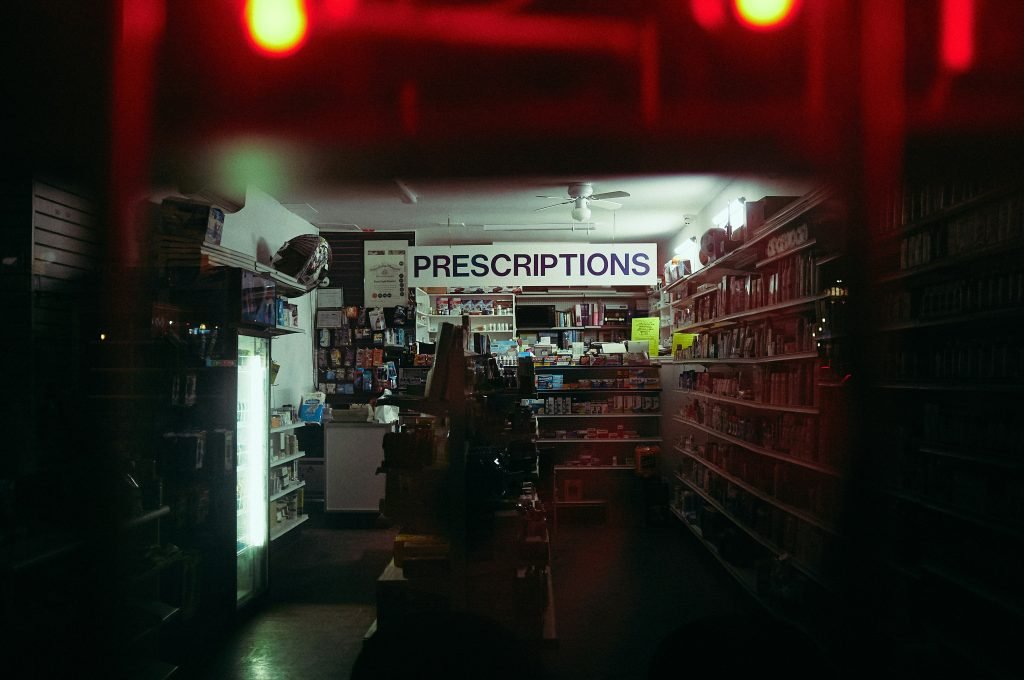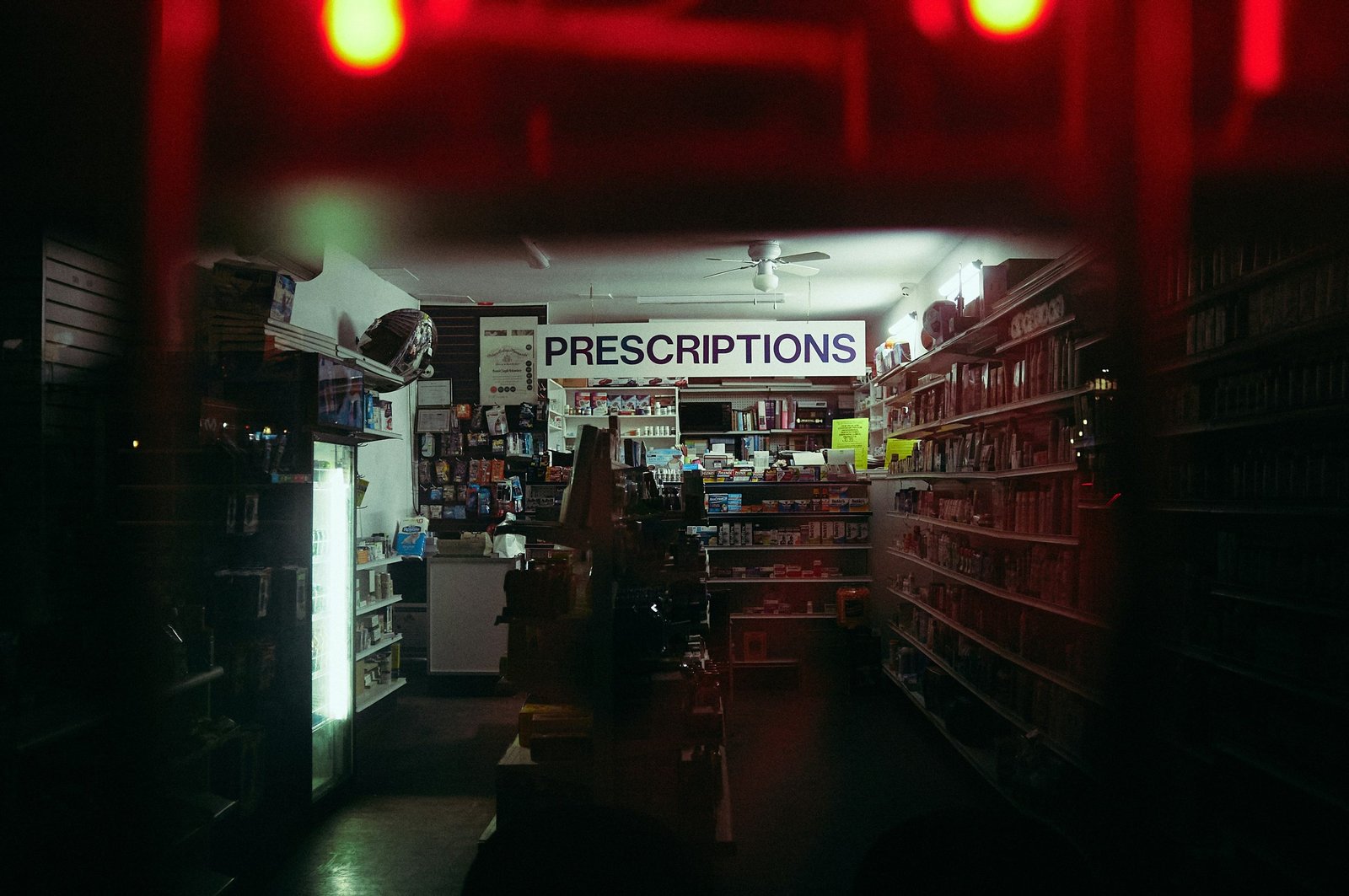Are you struggling to afford the skyrocketing prices of prescription drugs? Don’t worry, we’ve got you covered! Our new FlatFee Pharmacy Program, in partnership with MyFreePharmacy, offers a revolutionary solution – pay a monthly flat fee and get access to over 800 of the most prescribed medications for free! Whether it’s immediate need or maintenance medications, we’ve got you covered. No more overpaying or worrying about choosing between essential medications and daily necessities. Subscribe today for as low as $19.95 and start saving on your prescriptions. It’s time to take control of your healthcare and stop wasting money. Join our game-changing Flat Fee Pharmacy Program and get the coverage you deserve.

Understanding Prescription Drug Coverage
What is prescription drug coverage?
Prescription drug coverage refers to the inclusion of medications in an insurance plan’s benefits. This coverage helps individuals afford the cost of necessary prescription drugs, ensuring they have access to vital medications prescribed by healthcare providers.
Why is prescription drug coverage important?
Prescription drug coverage plays a crucial role in ensuring that individuals can afford the medications they need to maintain or improve their health. Without this coverage, the high costs of prescription drugs could be a barrier to receiving necessary treatment, leading to negative health outcomes.
How does prescription drug coverage work?
Prescription drug coverage typically operates through various mechanisms, depending on the specific insurance plan. Generally, individuals pay a monthly premium, and the insurance plan helps to cover the cost of prescription medications by reimbursing a portion or providing them at a reduced cost. Some plans may require copayments or deductibles, which are predetermined amounts that individuals are responsible for paying out of pocket.
Types of Prescription Drug Coverage
Employer-provided coverage
Employer-provided coverage is a common type of prescription drug coverage that is included as part of employment benefits. Employers often partner with insurance companies to offer comprehensive insurance plans that include prescription drug coverage. These plans may have different levels of coverage and may require copayments or deductibles.
Medicare prescription drug coverage
Medicare prescription drug coverage, also known as Part D, is a federally provided program that helps eligible individuals afford prescription medications. Medicare beneficiaries can choose from a range of Part D plans offered by private insurance companies, each with its own list of medications covered, copayment requirements, and monthly premiums. It is important for individuals to select a plan that aligns with their specific medication needs.
Medicaid prescription drug coverage
Medicaid is a state and federal program that provides healthcare coverage to low-income individuals and families. Medicaid prescription drug coverage varies by state, but generally, it includes a comprehensive list of medications at low or no cost to beneficiaries. Eligibility for Medicaid is based on various factors, such as income and household size, and individuals must apply through their state’s Medicaid program to determine if they qualify for prescription drug coverage.
Private insurance plans
Private insurance plans, whether purchased individually or through a group, often include prescription drug coverage. These plans are offered by commercial insurance companies and can vary in terms of medication coverage, copayments, deductibles, and premiums. It is important to carefully review the details of private insurance plans to ensure they meet an individual’s specific prescription drug needs.
State assistance programs
Some states offer their own prescription drug assistance programs to help individuals with limited financial resources afford essential medications. These programs may provide coverage for specific populations, such as seniors or individuals with certain medical conditions, and may have eligibility requirements and coverage limitations. It is recommended to research and contact the appropriate state agency to learn more about the prescription drug assistance programs available in your state.
Checking Your Current Coverage
Review your current insurance plan
To understand your prescription drug coverage, it is important to review your current insurance plan. This can typically be done by examining the plan documents provided by your employer, insurance company, or government program.
Check if prescription drug coverage is included
Confirm whether your current insurance plan includes prescription drug coverage. This information is usually outlined in the plan’s summary of benefits or drug formulary, which is a list of medications covered by the plan.
Identify any limitations or restrictions
Take note of any limitations or restrictions within your prescription drug coverage. These may include medication quantity limits, prior authorization requirements, or step therapy protocols. Understanding these limitations will help you navigate the prescription drug coverage effectively.
Understand copayments and deductibles
Become familiar with the copayments and deductibles associated with your prescription drug coverage. Copayments are fixed dollar amounts or percentages that you are responsible for paying when purchasing medications, while deductibles are predetermined amounts that you must pay out of pocket before your coverage kicks in.
Exploring Prescription Assistance Programs
Pharmaceutical company assistance programs
Pharmaceutical company assistance programs, often referred to as patient assistance programs, are initiatives provided by drug manufacturers to help individuals who cannot afford the cost of their medications. These programs may offer free or discounted medications to eligible individuals who meet specific income criteria or have no insurance coverage.
Patient assistance programs
In addition to pharmaceutical company assistance programs, there are independent patient assistance programs that provide support to individuals in need of prescription drug coverage. These programs are often run by nonprofit organizations and may offer financial assistance, copayment assistance, or access to discounted medications.
State-based prescription assistance programs
Some states have their own prescription assistance programs designed to help residents access affordable medications. These programs may provide coverage to individuals who do not qualify for Medicaid but still have limited financial resources. Eligibility requirements and program offerings vary by state, so it is important to research the specific programs available in your state.
Nonprofit organizations
Numerous nonprofit organizations exist to support individuals who need prescription drug coverage. These organizations may offer various resources, including financial assistance, copayment assistance, or access to discounted medications. Researching and reaching out to these organizations can provide valuable support in obtaining affordable prescription drugs.

Applying for Medicaid
Eligibility requirements for Medicaid
To apply for Medicaid, you must meet certain eligibility criteria established by your state. These criteria may include income limits, residency requirements, and other factors that determine if you qualify for the program’s healthcare benefits, including prescription drug coverage.
Applying for Medicaid
To apply for Medicaid, you will need to contact your state’s Medicaid agency or visit the official Medicaid website to begin the application process. This typically involves submitting an application form and providing documentation to verify your eligibility, such as proof of income and residency.
Understanding Medicaid prescription drug coverage
Once enrolled in Medicaid, you will have access to prescription drug coverage through the program. Medicaid covers a wide range of medications, and the specific coverage details will vary by state. It is important to review your state’s Medicaid formulary to understand which medications are covered and any copayment requirements.
Enrolling in Medicare Part D
Understanding Medicare Part D
Medicare Part D is a prescription drug coverage program offered to individuals eligible for Medicare, primarily those aged 65 and older. Medicare Part D requires beneficiaries to enroll in a private insurance plan that covers prescription medications. These plans have varying levels of coverage, copayments, deductibles, and formularies.
Enrollment periods and deadlines
Medicare Part D has specific enrollment periods during which individuals can join or switch plans. The initial enrollment period occurs when an individual first becomes eligible for Medicare, while the annual enrollment period takes place each year between October 15th and December 7th. It is important to meet these deadlines to ensure uninterrupted prescription drug coverage.
Choosing a Medicare Part D plan
When enrolling in Medicare Part D, it is essential to carefully compare the available plans. Consider factors such as monthly premiums, medication coverage, copayments, deductibles, and the pharmacy network to determine which plan best fits your needs. The Medicare website and other resources can provide assistance in comparing and selecting a suitable plan.
Understanding the coverage gap (donut hole)
The coverage gap, commonly known as the “donut hole,” is a temporary limit on what Medicare Part D will cover for prescription drugs. During this phase, beneficiaries may be responsible for a higher percentage of their medication costs. However, thanks to ongoing changes in the law, the coverage gap is gradually closing, reducing the financial burden on individuals.

Exploring Private Insurance Options
Researching different private insurance plans
When exploring private insurance options, conduct thorough research to identify different plans available to you. Consider factors such as coverage details, medication formularies, copayments, deductibles, and monthly premiums. Private insurance brokers, online comparison tools, and insurance company websites can provide valuable information during this process.
Comparing coverage and costs
Compare the coverage and costs of different private insurance plans to determine which one aligns with your prescription drug needs and financial situation. Pay attention to coverage restrictions, such as prior authorization requirements or limitations on specific medications, as these can impact your access to necessary medications.
Understanding formularies
Formularies are lists of medications covered by insurance plans. Each plan has its own formulary, which may categorize medications into different tiers based on cost and coverage levels. Understanding the formulary of a private insurance plan can help you determine if your prescribed medications are covered and how much you will have to pay.
Considering prescription drug coupons and discount programs
Some private insurance plans offer prescription drug coupons or discount programs that can help lower the cost of medications. These programs often provide savings for specific medications or offer discounts at specific pharmacies. Research and compare the options available to determine if they can help make your prescription drugs more affordable.
Utilizing Prescription Drug Coupons and Discount Programs
Finding prescription drug coupons
Prescription drug coupons are often available through various online platforms, manufacturer websites, or directly from healthcare providers. These coupons can provide discounts or reduce the copayments for specific medications. Researching and utilizing these coupons can help lower the out-of-pocket costs of prescription drugs.
Researching discount programs
Some discount programs, such as medication discount cards or membership programs, offer savings on a wide range of medications at participating pharmacies. These programs often require a membership or enrollment process but can provide significant cost reductions on prescription drugs. Research the options available and compare the savings and benefits provided.
Understanding limitations and restrictions
While prescription drug coupons and discount programs can be beneficial, it is important to understand any limitations or restrictions associated with them. Some programs may have eligibility requirements, limitations on medication quantities, or restrictions on specific pharmacies. Review the terms and conditions of these programs to ensure they meet your needs.
Comparing savings and costs
When utilizing prescription drug coupons and discount programs, compare the savings and costs associated with each option. Calculate the potential savings for your specific medications and evaluate any additional fees or requirements associated with each program. This comparison will help you choose the most cost-effective option.
Seeking Assistance from Nonprofit Organizations
Researching nonprofit organizations offering prescription drug coverage assistance
Several nonprofit organizations offer assistance programs to help individuals access affordable prescription drug coverage. These organizations may provide financial assistance, copayment assistance, or access to discounted medications. Research and identify nonprofit organizations that align with your needs and seek their support.
Understanding eligibility criteria
Nonprofit organizations often have eligibility criteria that individuals must meet to receive assistance. These criteria may include income limitations, residency requirements, or specific medical conditions. Review the eligibility criteria of the nonprofit organizations you are interested in to ensure you meet the necessary qualifications.
Applying for assistance
To apply for assistance from nonprofit organizations, you will typically need to complete an application form and provide supporting documentation, such as proof of income or medical information. Follow the application process outlined by the organization and submit all required materials within the specified deadlines.
Utilizing available resources and support
Once approved for assistance from nonprofit organizations, take full advantage of the available resources and support they offer. This may include access to affordable medications, educational materials, counseling, or additional financial assistance. Stay engaged with the organization to benefit from their ongoing support.
Finding Affordable Pharmacy Options
Researching pharmacies with competitive pricing
Not all pharmacies charge the same prices for medications, so researching pharmacies with competitive pricing can contribute to reducing your prescription drug costs. Compare prices at different pharmacies, including local and online options, to find the most affordable options for your medications.
Comparing prescription drug prices
One effective way to find affordable pharmacy options is by comparing prescription drug prices. Online tools and websites allow you to enter your medication information and compare prices across multiple pharmacies. By doing this, you can identify the pharmacies offering the lowest prices for your specific medications.
Exploring mail-order pharmacy options
Mail-order pharmacies can provide convenient and cost-effective options for obtaining prescription drugs. These pharmacies allow you to order medications through mail or delivery services, often offering discounts or lower copayments for certain medications. Research the mail-order pharmacy options available to you and evaluate their pricing and convenience.
Considering generic alternatives
Generic medications are typically less expensive than brand-name drugs, offering a cost-saving alternative. Talk to your healthcare provider about the potential of switching to generic versions of your prescribed medications. Additionally, discuss any concerns or questions you may have about generic alternatives to ensure they meet your healthcare needs.
By following these steps and exploring the various options for prescription drug coverage, you can gain a better understanding of how to obtain affordable medications. Remember to review your specific insurance plan, seek assistance from appropriate programs, and take advantage of available resources to ensure you can access the medications you need without facing financial hardship.



